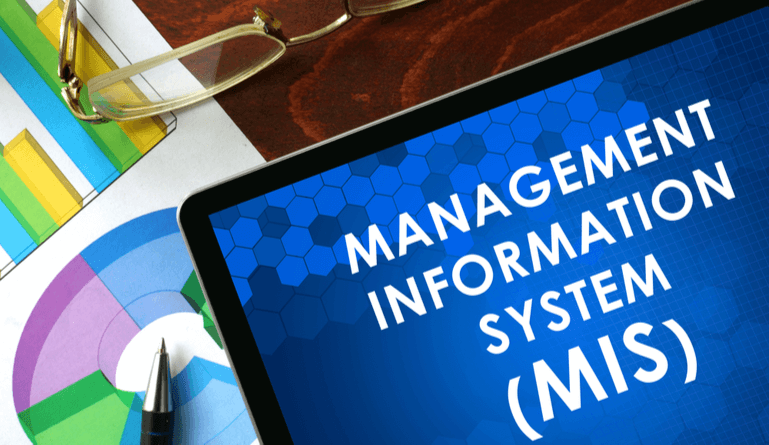What Is Management Information System?
Introduction
In today’s business world, data is a critical asset that drives decision-making, strategic planning, and overall management. Organizations rely on Management Information Systems (MIS) to effectively harness and manage this data. This guide offers an in-depth exploration of MIS, its definition, components, functions, advantages, and its role in achieving organizational success.
Understanding Management Information Systems (MIS)
Definition of Management Information System
A Management Information System (MIS) is a structured framework that organizations use to collect, process, store, and share data crucial for managing operations, making decisions, and achieving strategic goals. An MIS integrates data from multiple sources, processes it into actionable insights, and provides this information to managers at all levels, facilitating well-informed decision-making. read related content :Boost Mobile

MIS forms a key part of an organization’s overall information system, which may also include Transaction Processing Systems (TPS), Decision Support Systems (DSS), and Executive Information Systems (EIS). However, MIS specifically focuses on the management and flow of information within an organization to support effective management.
Components of MIS
MIS comprises several components that work together to manage and distribute information:
- Hardware: The physical devices, such as servers, computers, and networking equipment, used for data collection, storage, and processing.
- Software: Applications and programs, including database management systems, reporting tools, and data analytics software, that process and provide information to users.
- Data: The raw information collected from various sources within the organization, like customer transactions, sales figures, and inventory levels.
- Procedures: The rules and guidelines governing how data is collected, processed, and shared, including protocols for data entry, security, and information dissemination.
- People: The users, such as managers, IT staff, and end-users, who interact with the MIS, input data, interpret information, and make decisions based on the system’s insights.
The Role of MIS in an Organization
MIS plays a crucial role in providing managers with the necessary information to make informed decisions. It supports various organizational functions, such as:
- Decision-Making: Provides accurate, timely information for routine and strategic decisions.
- Coordination and Control: Facilitates coordination between departments by offering a centralized platform for sharing information and monitoring key performance indicators (KPIs).
- Data Management: Organizes, stores, and ensures easy access to vast amounts of data from various sources.
- Performance Monitoring: Tracks organizational and individual performance, helping managers identify areas needing improvement.
Types of Management Information Systems
Transaction Processing Systems (TPS)
Transaction Processing Systems (TPS) are the foundation of MIS, designed to handle daily business transactions such as sales, purchases, payroll, and inventory management. They automate data collection, storage, and processing, ensuring smooth operations and providing the raw data for more complex systems.
Decision Support Systems (DSS)
Decision Support Systems (DSS) are specialized MIS that aid in decision-making by providing analytical tools and models. Unlike TPS, DSS handles complex and unstructured decision processes, integrating data from various sources to help managers evaluate scenarios and make informed choices.
Executive Information Systems (EIS)
Executive Information Systems (EIS) are tailored for senior executives, providing high-level overviews of organizational performance through dashboards displaying KPIs, trends, and key metrics. EIS focuses on strategic decision-making rather than operational details.
Knowledge Management Systems (KMS)
Knowledge Management Systems (KMS) capture, store, and share knowledge within an organization, managing both documented information and tacit knowledge (experience and expertise). They are essential in organizations where knowledge is a critical asset, such as research institutions and technology firms.
Advantages and Disadvantages of MIS
Advantages of MIS
- Improved Decision-Making: Provides accurate and timely information for better decision-making.
- Increased Efficiency: Automates tasks and streamlines processes, reducing time and effort in managing information.
- Enhanced Communication: Offers a centralized platform for sharing information, improving coordination between departments.
- Better Data Management: Ensures data is organized, secure, and easily accessible.
- Competitive Advantage: Enables organizations to make informed decisions, quickly respond to market changes, and improve customer satisfaction.
Disadvantages of MIS
- High Implementation Costs: Expensive for small and medium-sized businesses due to costs associated with hardware, software, and training.
- Complexity: Can be challenging to design, implement, and manage, especially in large organizations.
- Security Risks: Vulnerable to data breaches and cyber-attacks, requiring continuous monitoring and investment in cybersecurity.
- Dependence on Technology: Heavy reliance on MIS can disrupt operations if the system fails.
- Resistance to Change: Employees may resist adopting new systems, reducing their effectiveness.
Implementing a Management Information System
Steps in Implementing MIS
- Needs Assessment: Determine the organization’s specific requirements and identify key processes and goals.
- System Design: Select appropriate hardware and software, design databases, and define data handling procedures.
- Development and Testing: Develop the system, set up hardware, and conduct tests to ensure functionality.
- Training and Implementation: Train users, provide manuals, and gradually deploy the system across the organization.
- Monitoring and Maintenance: Regularly monitor performance, update software, back up data, and address any issues.
Challenges in Implementing MIS
- Resistance to Change: Overcoming employee resistance to new systems.
- Data Quality: Ensuring the accuracy and completeness of data.
- Integration with Existing Systems: seamless integration with legacy systems.
- Cost Overruns: Managing budgets to prevent unexpected expenses.
- Security and Privacy Concerns: Protecting data and complying with data protection regulations.
Conclusion
A management information system (MIS) is a critical tool for organizations looking to improve decision-making, enhance efficiency, and maintain a competitive edge. Despite challenges in implementation, such as resistance to change and security concerns, the benefits of MIS, like improved data management and informed decision-making, make it an indispensable part of modern business management.
By carefully planning the implementation, ensuring data quality, and investing in security, organizations can successfully leverage MIS to achieve their strategic goals.


